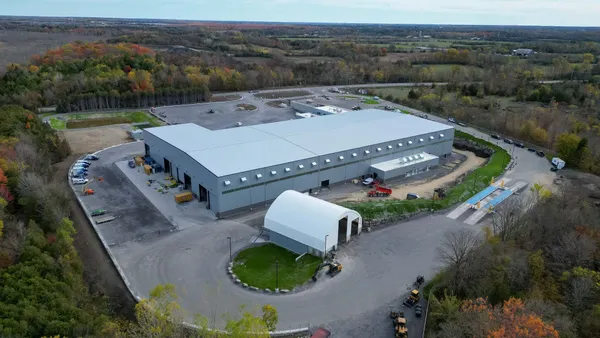Dive Brief:
- A new report from the New York City Independent Budget Office (IBO), a publicly funded nonpartisan agency, shows that the Department of Sanitation's (DSNY) export costs will continue to climb beyond the current fiscal year's budget of $360 million. DSNY's new proposed budget would increase export spending to $392 million by FY18 and eventually $420 million by FY21.
- According to IBO analysis, the average cost per ton for long-term contracts increased from $63.39 in 2007 to $129.81 in 2016. Short-term contracts saw a slight decrease from $86.55 to $84.96 per ton over the same period.
- This trend is attributed to higher operating costs for the city's marine transfer station (MTS) network. Though the system was originally projected to be less expensive, costs have increased since the first MTS came online in 2014. The IBO predicts that these costs could eventually stabilize and decline once all four planned facilities are fully operational.
Dive Insight:
Since the 2001 closure of Fresh Kills, the city's last landfill, export costs have been on a steady rise. The expense of shipping material as far as Ohio, Kentucky and South Carolina has played a role in this trend. Though the 2006 decision to invest in the MTS network has also been costly. Construction delays, legal challenges and contract setbacks have all been contributing factors. As first reported by Waste Dive, DSNY recently selected Waste Management for a 20-year $3.3 billion deal to handle material from two of the facilities after an earlier deal with Progressive Waste Solutions fell apart. Covanta was previously awarded the contract for DSNY's other two marine facilities.
While DSNY officials have recognized the cost of this MTS network before, they still stand behind the anticipated environmental benefits of reducing greenhouse gas emissions and truck traffic. DSNY has begun using more private rail transfer stations in recent years, but it still has contracts with some of the truck-based facilities that have been the subject of ongoing environmental justice concerns. The regulation of these facilities is also part of the conversation around commercial waste reform.
As DSNY works to improve and expand diversion options in pursuit of its 2030 "zero waste" goal, the volume of refuse coming through the MTS network may eventually decrease. The operating expenses of these large, modern facilities would still remain, though any discussions about a lack of volume are many years away. First, the city must figure out how to get its residential diversion rate above the current average of 17% if it hopes to reduce this expensive dependence on long-distance disposal facilities. DSNY recently issued a request for proposals to develop a "save-as-you-throw" system that many see as one of the best ways to stabilize New York's wasteful trends.










